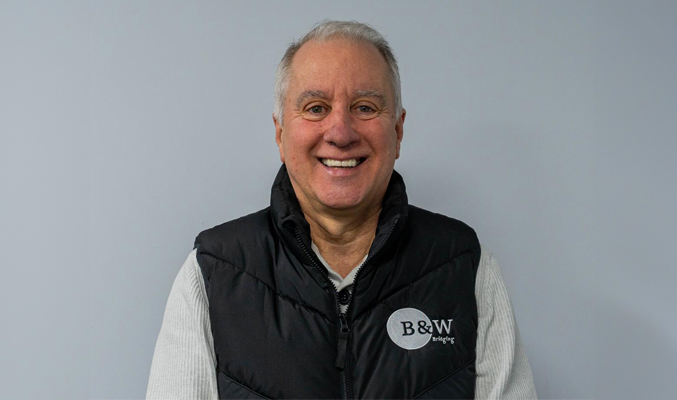COP26: “Achieving the climate goals will require all forms of finance”
By Hannah Duncan

As COP26 draws closer, all eyes are focusing on the world’s heaviest and guiltiest carbon emitters – especially those based in the UK.
But it may come as a surprise to many that the top emitters are not oil tycoons. They’re not aviation, fast fashion or cheap meat producers neither… But rather, the industry that enables them, financial services.
The COP26 report for private finance explains in the opening pages how 60% of the world’s carbon emissions are traced back to just 75 central banks. Ouch. As one of the financial hubs of the world, this doesn’t bode well for the UK.
Has the time come for lenders stop turning a blind eye to what carbon their money is emitting? Lenders must allocate capital responsibly, the report implies, before it’s too late.
Finance and lending “critical to accelerating and smoothing” net-zero transition
Rallying up financial services is vital to reduce carbon emissions. After all, without £6.9 trillion of dedicated sustainable capital each year, we will not meet our net-zero goal[1]. And despite its lacklustre pace, lending is probably the most important way to achieve this figure.
“Lending is key in the developing world”, explains CEO of Chartered Banker Institute, COP veteran, and sustainable finance author, Simon Thompson.
“It’s by far the main source of finance and sustainability-linked lending is probably where the future lies”, he continues.
Property lenders must “think creatively” to incentivize carbon reductions
Property and bridging lenders have the potential to dramatically reduce carbon emissions – perhaps far more than many realize.
By incentivizing energy efficiency and green building methods, they can wipe away so many greenhouse gas emissions. Not just for today, but for across entire lifecycle of the property. In turn, this can save on costs and make the property more valuable in the long-term – a real win-win for lenders.
Discover more about the first flickers of green bridging loans
And it’s not that hard to do. The largest issuer of green bonds in the world, for example, isn’t a global ESG investment powerhouse or a consortium of concerned asset managers. It’s the plain old US Federal National Mortgage Association. Fannie Mae, as it’s known to many old-school bankers, issued close to $13 billion as of June 2020[2]… If a heaving and slow mortgage federation can do it, the UK’s agile and creative bridging lenders surely can.
“Ensure that every professional decision takes climate finance into account”
For bridging lenders who want to crack on and start making a difference, there’s already a wealth of guidance available.
The COP26 paper encourages private finance to break down the process into four categories; reporting, risk management, returns and mobilization.
Reporting:
Getting an accurate measurement of the carbon emitted has long been a real headache for finance. Bigger firms have even taken on additional headcount to try and calculate the elusive gases. While smaller firms have turned to off-setters… with mixed results.
Read more about the shady practices of some off-setters here
However the need for harmonized reporting is picking up momentum, and now it seems that the Task Force on Climate-related Financial Disclosures (TCFD) methodology is surging ahead as the leading system.
“TCFD is arguably the most talked about “standard” within sustainability”, explains Group Head of ESG, Sustainability and Impact Investing at Quintet Private Bank, James Purcell. “It’s fast becoming a “quasi-regulation” as regulators line up to recommend or implement (occasionally with adaptations)”.
Informed by science-based targets, a standardized way of measuring and reporting emissions is essential to ensure that we’re all reading from the same song sheet.
Risk Management:
Underwriting risk is the bread and butter (or should we say bricks and mortar?) of bridging lenders. It’s their ultimate expertise.
But how can this be leveraged towards the net-zero goals? According to Thompson, there are two main parts to this process. The first is to incorporate climate into every risk-making decision. This includes, “credit, market, operational, reputational and most, if not all, risk types”. Considering climate at every stage of the process matches up with Mark Carney’s COP leadership goals too. Carney has stated that above all else, “every professional decision must take climate change into account”.
For some, this may mean studying up on the latest sustainable construction methods and technologies. After all, the likes of modular buildings and renewable energy have come a long way since many senior decision makers last went to university.
Why lenders need to start underwriting new modular builds
The second part, naturally, is to implement these decisions. This will not only support the transition to net-zero, but it also a “key long-term risk mitigation tool for lenders too”, according to Thompson.
Returns:
Aviva Investors latched onto the benefits of green lending early. The group has committed to originating £1 billion in climate transition real estate debt by 2025.
Find out more about Aviva’s latest £200 million sustainability-linked deal here
For key decision maker, Gregor Bamert, Head of Real Estate Finance at Aviva Investors, the return potential of sustainability-linked lending is “significant”.
In a triangle of revenue opportunities, green loans come from
“financing the upgrading or repurposing of existing property, financing the development of new and sustainable buildings, and aligning the financing structure of borrowers to specific environmental objectives”, he reveals.
“Generating commercial returns while achieving genuine impact”, is Bamert’s favourite thing about sustainability-linked loans.
Mobilization:
Moving the flow of finance away from dirty construction practices, and towards green projects is probably the most impactful thing lenders can do to save the planet. This normally means increasing the interest rates for bad practices, and making rates more attractive for sustainable methods.
So far, the progress has been short and slow for the property finance community. However, as Bamert explains, the momentum for change is building. “There is strong demand both by lenders/ investors and by borrowers for such financing”, he comments. “By providing loans which are aligned to a robust methodology and independently assessed, further capital can be unlocked”.
However, the mobilization will only work well if it’s done in a co-ordinated and organized way, as the COP26 paper explains.
Urgent need for “clear, positive, targeted and coordinated agenda”
COP26 documents are full of warnings. One of them is public anarchy. “In the absence of a clear, positive, targeted and coordinated agenda”, the paper begins. “…Demands will grow for simplistic solutions such as wholesale divestment and protectionism that will undermine a smooth transition and fail to achieve our climate goals”.
Of course, we cannot just cut all funds to dirty construction overnight. That would trigger a chain unimaginable hardship for employees and businesses all over the world. But it cannot carry on either.
What’s needed are clearly communicated strategic targets. And every financial house – regardless of its size or clients – must get involved.
One lending firm already working hard on this is Hope Capital. “The importance of setting targets which can and will be met, is pivotal to ensure we are best positioned to help fight climate change”, expresses CEO Jonathan Sealey. “Ultimately, everyone has a role to play, regardless of what sector they operate in… The most important thing is to not just talk the talk but walk the walk!”.
How soon can green bridging loans become mainstream?
You only need take a cursory glance at the Bridging Loan Directory news to see how rapidly green bridging loans are gathering pace.
We’ve moved from receiving one or two sustainable updates appearing every year, to every month. Soon, no doubt, it will be a weekly event as sustainable lending fires ahead into the mainstream, just like ESG investments have done.
How quickly we transition green bridging loans into the new normal will have a momentous impact on the climate.
Ready to make a start? Here are five ways bridging lenders can cut carbon emissions

Hannah Duncan is a freelance writer with a passion for finance, sustainable investing and fintech. She loves writing engaging content for industry magazines and investment services, as well as keeping a personal blog at www.hdinvestmentcontent.com
[2] Source : PRNewswire
COP26 Source:










You must be logged in to post a comment.